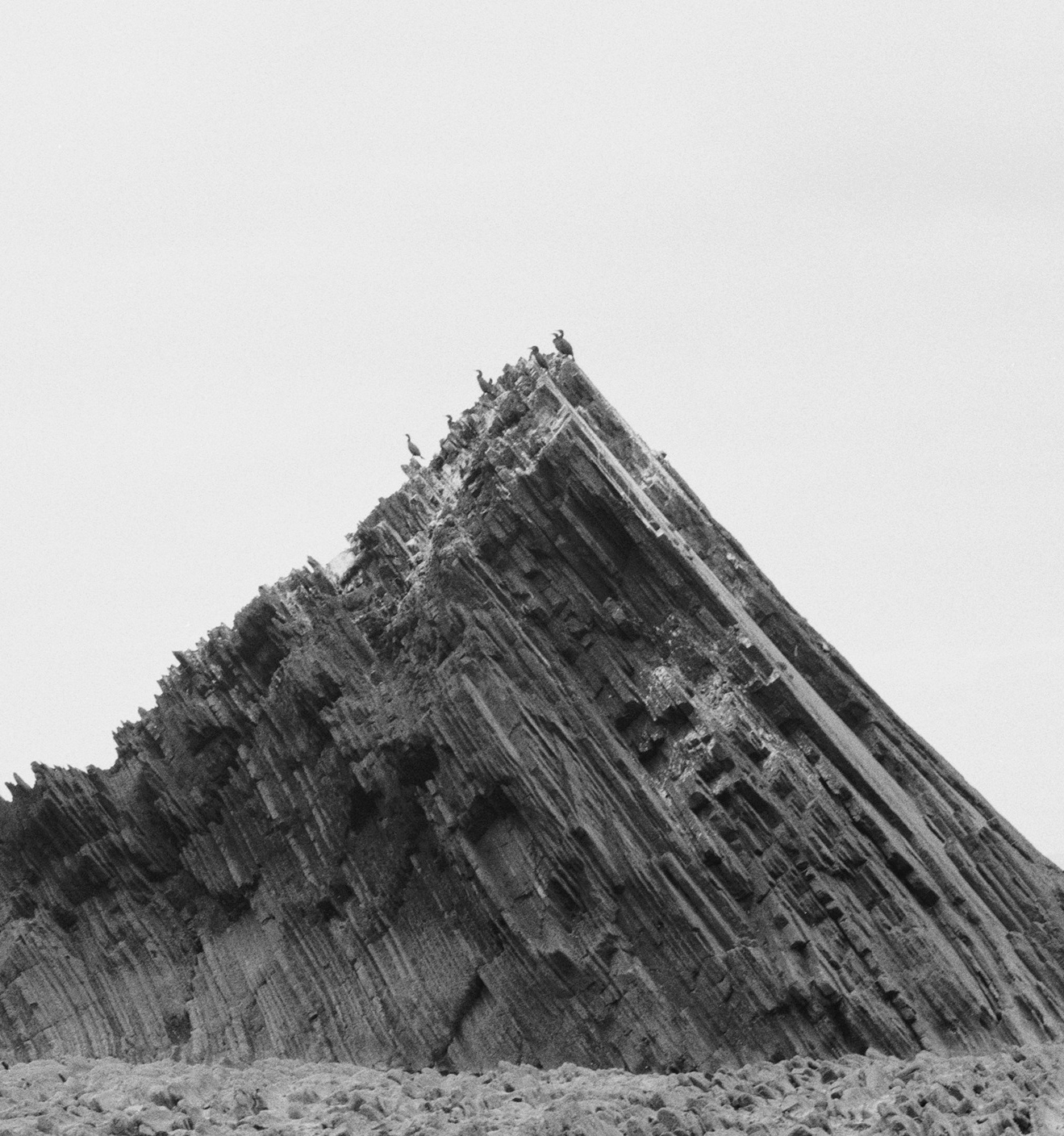Joseph Beuys famously declared that everyone is an artist. Nowadays, however, it would appear we are all curators. In today’s vernacular, we’re urged to ‘curate’ all aspects of our lives, from the posters that hang in our homes, to the posts that adorn our Facebook walls. Whole Foods even goes so far as to invite customers to curate their shopping baskets[1], whilst fashion retailer J.Crew confirms the aspirational status of such a lifestyle with its line of Curator slacks.
The recent glorification of the role of the curator can perhaps be seen as a product of the narcissistic tendencies of our social media culture, in which everyone has a platform to cultivate their online personas and vie for attention with impeccably manicured Tumblrs, Pinterest boards and ArtStacks, showcasing their taste, style and individuality to the world. Here, strategies of selection, appropriation and recontextualisation have come to be held in as high regard as any act of artistic creation. After all, one might ask, what is it that artists themselves do but rearrange and (re)present the world as they find it?
In an age in which celebrity curators are given billing equal to (or even surpassing) those of the artists they exhibit, there is, however, a danger of a loss of perspective in terms of what is at stake in art’s endeavours. Often, the value and authority of the act of curation is foregrounded at the expense of the autonomy of a collection’s constituent parts, with the perceived content or depth of individual artworks assuming secondary importance. It’s hard not to be taken aback, for example, by the unnervingly slick video promo for a recent competition from the Qatar Museums Authority and Fondazione Prada, which elevates the role of curator to unprecedented levels of glossy omnipotence, whilst seemingly harbouring a perverse desire to bypass the necessity and specificity of the work of art entirely:
The competition recognises that we are all curators. Everything we choose and collect to surround us has meaning. Great curatorial expressions and ideas on how to exhibit can be communicated in all artistic forms and media, by anyone, whether in the art world or not. [2]
Though there are some potentially noble intentions behind this egalitarian-sounding language, the more one reads, the more it all starts to seem like curation for the sake of curation: the medium of curation becoming the message. And applicants here, one imagines, would need to possess the sort of unhealthy levels of egotism normally reserved for X Factor contestants in order to deem their own curatorial ideas “culturally significant.” At what point, we might ask, did the role of the individual curator usurp that of the community of artists?
Thankfully, young artists and curators today are generally (though not always) rather more humble creatures, to whose ears such sweeping proclamations of grandiose cultural significance sound brash and cynical; out of step with the emergent and thriving rhizomatic frameworks of artistic discourse. The rise of artist-run studios and exhibition spaces evidences a vibrant collaborative spirit in which curators and artists increasingly operate as equals, with the two functioning symbiotically, rather than one vying for acclamation or authority over the other. In this way, common strands of thought can be seen to emerge and evolve organically, resonating instantaneously amongst peers, instead of being mediated through clunky, outmoded hierarchies of institutional curation and validation.
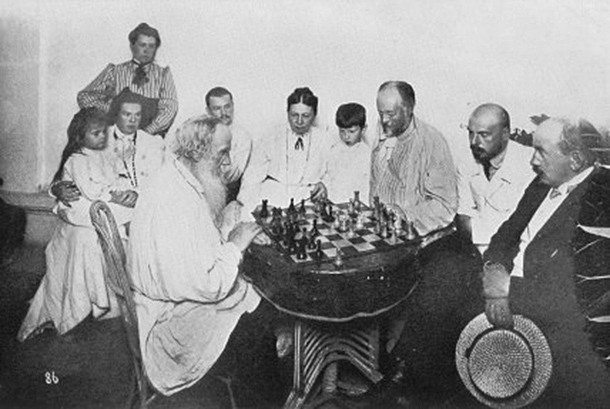
One fine recent example of such interplay can be found in the inaugural group exhibition at Chandelier Projects, housed in the East London studio of artist Karen Knorr. Assembled by writer, curator and Notes on Metamodernism contributor, Daniel C Blight, Moves takes as its rather idiosyncratic starting point a small vintage silver gelatin photograph of Leo Tolstoy playing chess with his son-in-law, dating from 1908. Here, several generations of family and friends are pictured nestled around the bearded writer’s table, gazing on. Some carry intense, almost startled expressions; others appear at ease. One particular gentleman catches the eye for his rather uncanny resemblance to Lenin. The image is rich and overflowing, tightly posed and composed.
Blight highlights here the figure of the grid, the chessboard, as a signifier for the imposition of order: a framework both to adhere to, and to resist. Tellingly, as he explains in his introductory essay, The Failing Grid, Tolstoy was a compulsive gambler “who loved chess and often cheated at it.” The accompanying works in the show all echo this theme, exhibiting a decidedly metamodern love of structures, geometries and trajectories that rejects an unconditional postmodern surrender to chaos, whilst being fully attuned to the inevitability of any system’s eventual entropic disintegration.
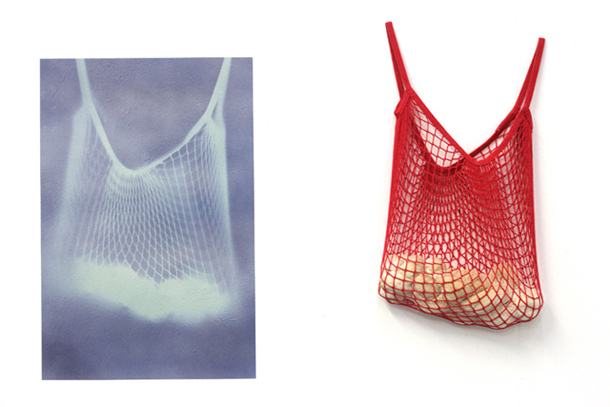
Jonathan Murphy’s Give us this day, our daily bread sees a loaf of pigmented bread hung in a red net bag on the wall. Immediately beside this arrangement is an exposure of that same composition, its contorted grid caught within a patch of unfixed photographic emulsion applied directly to the wall. Revisiting the space a number of weeks later, the image has almost completely decayed, the ghostly veins of the net vanishing into the blotchy, mould-like surface of the emulsion. All the while, the physical props themselves remain unmoved, hanging stale and indifferent to the poetics of their trace.
More or Less Obvious Forms, Darren Harvey-Regan’s portrait of a bust of Plato, makes another appearance here. The hand-drawn imperfection of the statue’s perspective-defying checkerboard pattern portrays the pathos of the artist’s earnest, yet knowingly doomed desire for ideal Platonic forms. Elsewhere, Tom Owen layers grid upon corrupted grid in his piece depicting a barren, scored terrain printed on a sheet of PVC mesh. The uneven reptilian lines suggest the cracked surface of a dried patch of earth, but both scale and content are rendered ambiguous by the porous ground of the PVC. The work’s title, Hiraeth—a Welsh word with no direct English translation—describes a kind of homesickness and yearning for a place that is lost or departed. The instability of Owen’s image fittingly exerts an oscillation between a sense of grounding and ungrounding: “A grid, all in a blur: forming and formless.”[3]
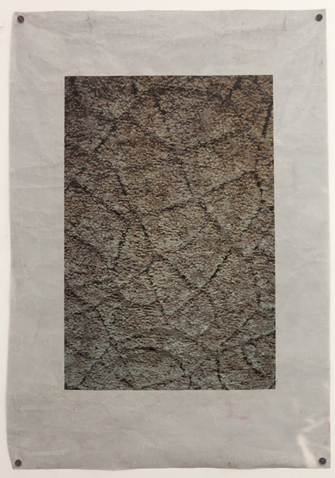
The work of Amy Petra Woodward similarly plays with the intermeshed layering of images and surfaces, with row upon row of photographs printed onto rolls of reflective Lycra. The pictures, themselves of gridded objects, drift fleetingly in and out of vision as the Lycra, in all its ‘80s retro-futuristic materiality, catches the light. A metal lattice, the pixels of a monitor, the veins of a housefly’s wings: all consumed within the shimmering moiré patterns of the fabric. Here and there we glimpse their forms, but clear delineation evades our grasp, no matter our vantage point. Insubstantial yet overloaded, the disorientating order of things is delightfully frustrating.
What is key to the show’s curation is the manner in which Blight has weaved the practices of several artists around that single Tolstoy image, turning a photograph of particular personal fascination into a broader collective meditation. His text describes the show’s artworks as if they have all drawn direct inspiration from that single image, even though we may well know this not to have been the case. The wilful mythologising at the heart of the exhibition proves both endearing and constructive, providing a malleable and imaginative sense of curatorial coherence that illuminates the works’ common conceptual traits.
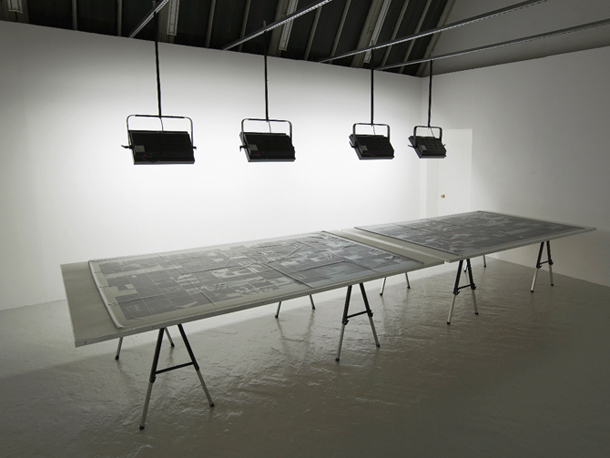
Not far from here, Tereza Zelenkova’s show at Legion TV continues an engagement with the notion of formlessness, with photographic works that both cling to and repel their own structures of order and categorisation. Indeed, the schema here, which sees pictures and texts grouped under alphabetic headings, draws inspiration from the Critical Dictionary that graced the pages of Georges Bataille’s 1929 Documents magazine, from which his notion of l’informe was first unleashed upon the world.
The letter ‘P’ presents us with a series of photographs of Paris, capturing sweeping staircases and grand exteriors that bring to mind the disquietingly surreal imagery of Eugene Atget and Alain Resnais. In one picture, a small tree arches upwards from the foot of a grave in a scoliotic thrust towards the heavens, like some overgrown bonsai breaking free from its departed master’s control. Elsewhere, a baroque confessional booth stands imposingly in the corner of a church. A nod to the Bataillian transgressive impulse, here the apparatus of institutional morality appears dusty and obsolete, a relic of the past that perhaps speaks only of the illusory nature of transgression itself. Beyond the architecture of the space, the eye is drawn to a small patch of light bleeding in from the bottom corner of the image, imbuing the photograph with a ghostly presence that entices the viewer out of the frame, beyond the cadaverous fixity of cold photographic reality.
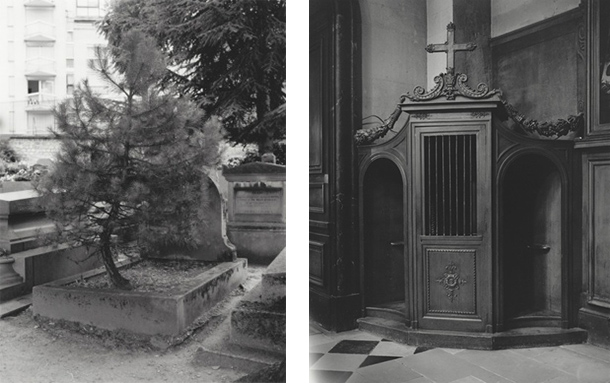
In one collection of pictures, Zelenkova’s lens is turned towards the artefacts that inhabit the fusty corridors of museums. Of these objects, she writes, “Their form, once subordinate to their function, becomes increasingly visible. The sole purpose of their existence now lies in their appearance.” In one image, a dinosaur bone thus appears as a strange amorphous molar clump huddled between two doorways. In the next, a Michelangelo statue wrapped in a veil of translucent plastic sheeting becomes a lament to the impenetrable inner lives of objects, whilst revelling in the transformative, eroticising potential of photography.
A final group of photographs depicts Freud’s study: his famous couch, with its heap of oriental rugs and plush cushions; the collection of antiquities and ancient figurines atop his desk; the peculiar anthropomorphic chair designed for him by the architect Felix Augenfeld. Each image has been subjected to the same stark flash lighting, with shadows deep and harsh. Slightly ill-composed so as to convey a sense of haste and urgency, they evoke the amateurish snapshot aesthetic of a certain genre of mystical spirit photography. Is Zelenkova herself trying to capture some kind of phantasmic aura? Or is she knowingly parodying the hackneyed cliché of the contemporary art photographer’s pilgrimage to Freud’s study—to this hallowed, yet equally discredited ground—in order to underline the absence of revelation? One suspects, in fact, that here she is attempting to perform both tasks at once.
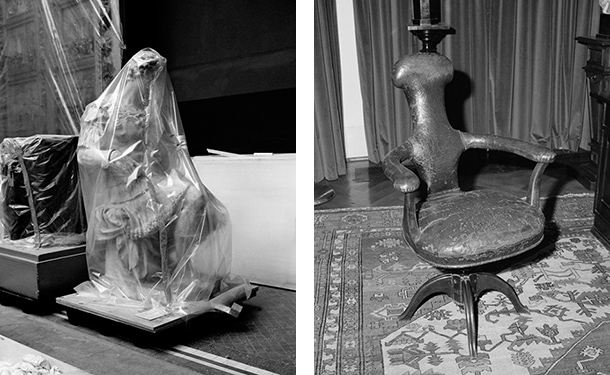
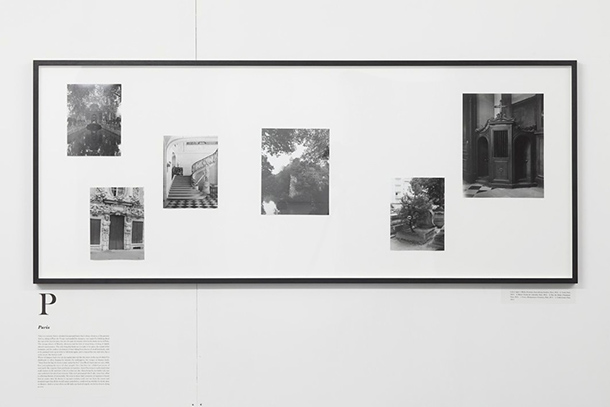
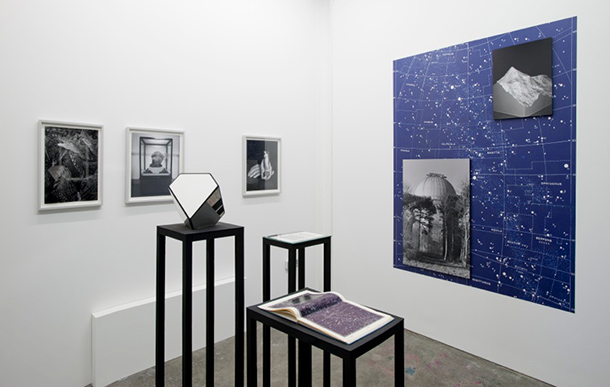
The Absence of Myth, the exhibition’s title, thus only tells half the story. In her 2012 installation, The Other Night, with its clusters of star charts and mirrored polyhedrons, Zelenkova emphasised a sense of the mystical as a style without substance, whilst nonetheless appearing to yearn for some kind of transcendent substantiation—for that dark ‘beyond’ to which her images allude. Her latest show, meanwhile, is notable for the sparseness of the hang within the compact gallery space. Reading the space from left to right, the entire final third of the room has been left empty, its bare white walls accentuating the sense of an unfinished, ongoing and fragmentary artistic enquiry. The decision to impose such restraint is the result of both the invisible hand of the project space’s curators, and of Zelenkova herself very deliberately curating the works within her own practice. This same type of self-organisation can be seen more widely in the increasing prevalence of self-published artist books—an excellent example of which accompanies Zelenkova’s exhibition.
In both these shows, the precision of curation is essential, yet their overt claims are modest and resolutely provisional. Here, we are a million miles from sensationalist Prada-funded extravaganzas, eschewing ambitions of universally relevant meaning designed to appeal to a lowest common denominator (such as Alain de Botton’s terrifyingly prescriptive recent vision of galleries as apothecaries for the soul). Common to both are meditations upon the marks of long-dead figures, from Tolstoy to Plato, to Freud and Bataille, taking great pleasure in deconstructing and constructing their mythologies anew.
In chess, it is often said that a quiet move is more effective, though more demanding, than a flashy sacrifice. Many creative minds today, empowered and united by the ease of communication in a hyper-networked culture, understand intuitively that the quiet moves of many may, in the long run, be more affecting than the senstationalist posturing of any one individual. Curation here can be most worthwhile when it melts into the mesh of the whole. And exhibitions (just as with Tumblrs) are often most intriguing, most enigmatic and rewarding, when they are assembled for no reason other than their creators’ introspective meditations, inviting false moves and misinterpretation, and mirroring our own efforts to come to terms with the conflicting ideas and objectives of the contemporary age.
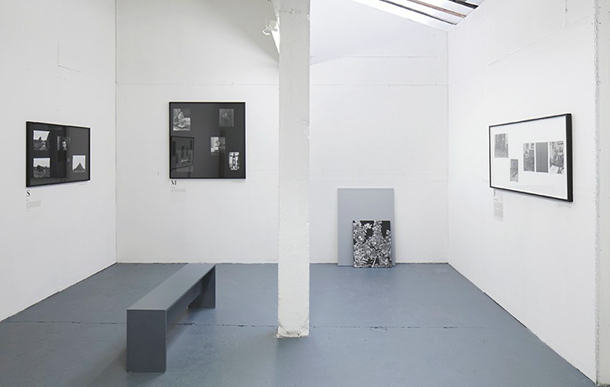
Tereza Zelenkova’s ‘The Absence of Myth’ runs until 23rd November at Legion TV.
More details from the ‘Moves’ exhibition can be found on the Chandelier website.
All works © the artists. Images (from top):
Tereza Zelenkova, Sea coast, Aberystwyth (2013)
Anonymous, Tolstoy plays chess with his son-in-law M. Sukhotin (1908)
Jonathan Murphy, Give us this day, our daily bread (2013)
Tom Owen, Hiraeth I, (2012)
Amy Petra Woodward, FILO (2013)
Tereza Zelenkova, Grave, Montparnasse Cemetery, Paris (2013); Confessional, Paris (2013); Guiliano de Medici by Michelangelo, V&A, London (2013); Freud’s chair, Freud’s Museum, London (2013); The Absence of Myth installation view, Legion TV (2013); The Other Night installation view, RCA, (2012); The Absence of Myth installation view (2013).
[1] http://www.theguardian.com/culture-professionals-network/culture-professionals-blog/2013/aug/23/art-curator-in-digital-age
[2] http://www.curateaward.org/#the-award
[3] Daniel C Blight, The Failing Grid (2013): http://chandelierprojects.com/The-Failing-Grid-Daniel-C-Blight


